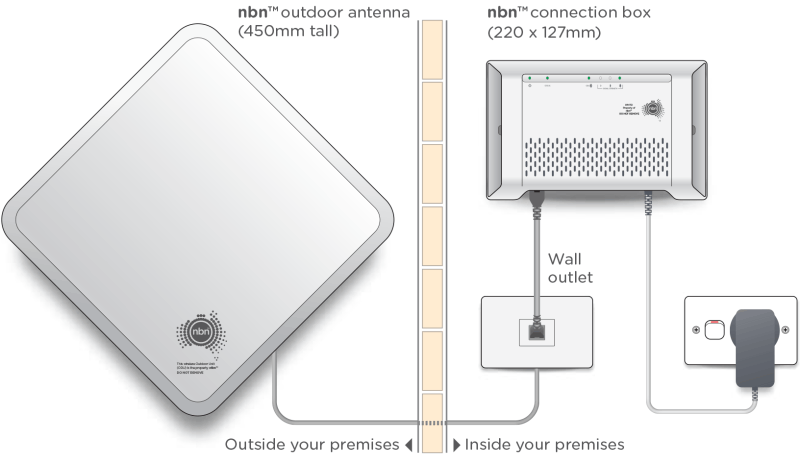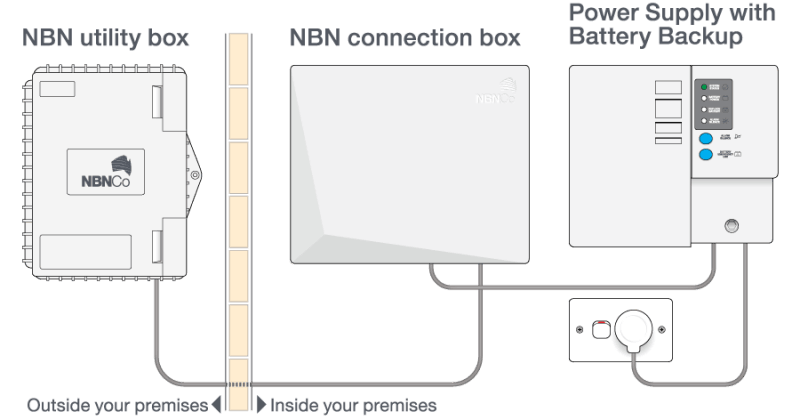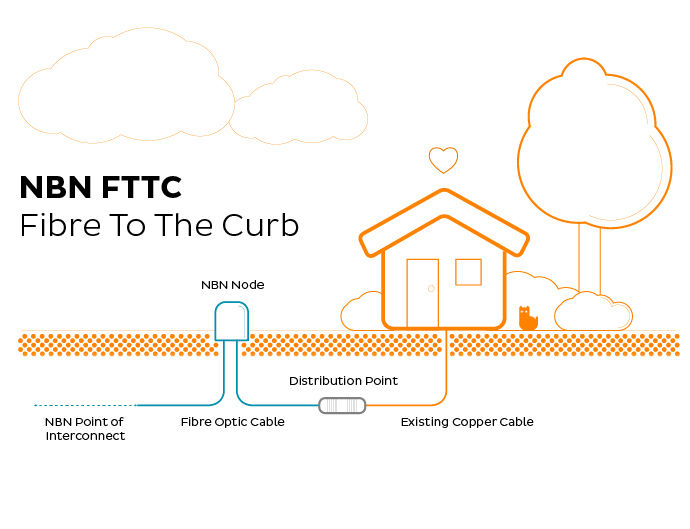 Fixed Wireless
Fixed Wireless Fibre to the Node
Fibre to the Node Fibre to the Premises
Fibre to the Premises Fibre to The Curb
Fibre to The CurbNBN Assistance
All types of nbn network connections that utilise a physical line running to the premises are considered fixed line connections. An nbn Fibre to the Node (FTTN) connection is utilised in circumstances where the existing copper network will be used to make the final part of the nbn network connection, from a nearby FTTN cabinet or micro-node to your premises.
The fibre node is likely to take the form of a street cabinet. Each street cabinet will allow the nbn network signal to travel over optic fibre from the exchange to the cabinet, and connect with the existing copper network to reach your premises
Your choice of speed and provider
To get the best nbn network experience, check your address and contact your preferred service provider about the options that are available to your premises. Not all speeds greater than nbn 25 are available at all premises.
Get the most from your nbn network connection
Consider the number of users and types of applications within your household or business. If you have many users and many devices and you do things like stream video on a regular basis, you should discuss higher speed options with your service provider so they can recommend the plan that’s best for you. For more information on your modem setup, and other advice like migrating business
A fixed wireless connection is typically used in circumstances where the distance between premises can be many kilometres. In this circumstance data travels from a transmission tower located as much as 14kms from a premises to a rooftop antenna that has been fitted by an approved nbn Installer.
Fixed wireless connections also require an nbn network device to be installed at the point where the cable from the roof antenna enters your home. This device requires power to operate, and can only be installed by an approved nbn Installer or service provider.